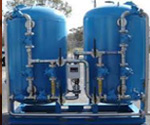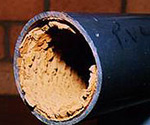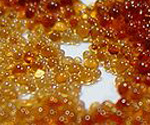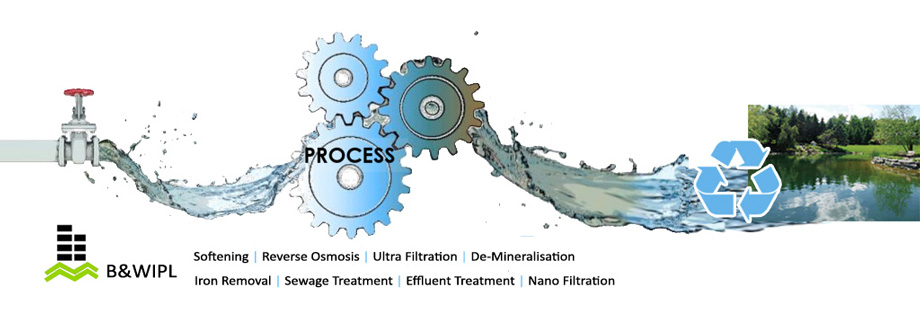Water softening is the removal of calcium, magnesium, and certain other metal cations in hard water. The resulting soft water requires less soap for the same cleaning effort, as soap is not wasted mopping up calcium ions. Soft water also extends the lifetime of plumbing by reducing or eliminating scale build-up in pipes and fittings. Water softening is usually achieved using lime softening or ion-exchange resins.
Conventional Water Softening
 Conventional water softening is most often based a process known as ion exchange, utilizing a synthetic polymeric (plastic) material in the form of very small beads called ion exchange resin. The resin is porous so that each bead has tremendous surface area and the surface area is chemically constructed to contain billions of active or "exchange sites." These sites have considerable affinity for metals in the water with valences (i.e., charges of +2 and +3). Thus, when water containing calcium, magnesium (the two major constituents of hard water), dissolved iron, copper or aluminum, the active sites attract and "hold" these ions.
Conventional water softening is most often based a process known as ion exchange, utilizing a synthetic polymeric (plastic) material in the form of very small beads called ion exchange resin. The resin is porous so that each bead has tremendous surface area and the surface area is chemically constructed to contain billions of active or "exchange sites." These sites have considerable affinity for metals in the water with valences (i.e., charges of +2 and +3). Thus, when water containing calcium, magnesium (the two major constituents of hard water), dissolved iron, copper or aluminum, the active sites attract and "hold" these ions.
 However, in order to do so, the sites must have a less tightly held ion to "exchange" for the metal hardness ions. While the resin does not prefer ions with a single charge, fortunately under conditions of high concentration and extended time of exposure, sodium ions can be "forced" onto the active sites by slowly passing a concentrated solution of sodium chloride (table salt) over the resin. Thus, a relatively inexpensive, readily available, safe chemical can be used to "regenerate" the resin. Ion exchange resins are also used to produce high purity Demineralized water but the resin and regeneration chemicals are different (see ion exchange).
However, in order to do so, the sites must have a less tightly held ion to "exchange" for the metal hardness ions. While the resin does not prefer ions with a single charge, fortunately under conditions of high concentration and extended time of exposure, sodium ions can be "forced" onto the active sites by slowly passing a concentrated solution of sodium chloride (table salt) over the resin. Thus, a relatively inexpensive, readily available, safe chemical can be used to "regenerate" the resin. Ion exchange resins are also used to produce high purity Demineralized water but the resin and regeneration chemicals are different (see ion exchange).
Disadvantages include the need to dispose of waste water high in salinity and the fact that water treated with an ion exchange water softener has sodium added. According to the Water Quality Association (WQA), the ion exchange softening process adds sodium at the rate of about 8 mg/liter for each grain of hardness removed per gallon of water. A "grain" of hardness is equal to 17.1 mg/l or ppm of calcium carbonate.
Softening Equipment
A water softener typically consists of two tanks, a larger one into which rock or pellet salt is added and a smaller tank containing the ion exchange resin through which the hard water passes. A control valve fixed atop the resin tank of the industrial water softener causes the system to recharge or regenerate based on passage of a pre-set time or it meters the water treatment and initiates regeneration based on a pre-set number of gallons treated.
 When regeneration is initiated, the first step is to backwash the resin bed with raw water to fluff the resin and remove entrained dirt and sediment. Then brine is slowly deducted from the salt tank at a set flowrate for a specific time (set as a function of the resin volume and the influent water hardness), followed by a slow draw of raw water to slowly displace the brine solution. This is followed by a faster flow of raw water to thoroughly flush any remaining salt from the resin bed. During this entire process, the control valve either prevents raw water from flowing to service or allows raw water to by-pass the softener during regeneration. Often two parallel industrial water softeners are operated together, in order to avoid any interruption to soft water.
When regeneration is initiated, the first step is to backwash the resin bed with raw water to fluff the resin and remove entrained dirt and sediment. Then brine is slowly deducted from the salt tank at a set flowrate for a specific time (set as a function of the resin volume and the influent water hardness), followed by a slow draw of raw water to slowly displace the brine solution. This is followed by a faster flow of raw water to thoroughly flush any remaining salt from the resin bed. During this entire process, the control valve either prevents raw water from flowing to service or allows raw water to by-pass the softener during regeneration. Often two parallel industrial water softeners are operated together, in order to avoid any interruption to soft water.
Disadvantages to conventional softening are consumption of copious volumes of salt and the discharge of highly saline waste water from the regeneration step. The WaterProfessionals® routinely work with clients to include partial brine reclaim systems to minimize this waste. They also evaluate the use of nanofiltration as an alternative approach, depending on the hardness and volume requirements for a specific application.



